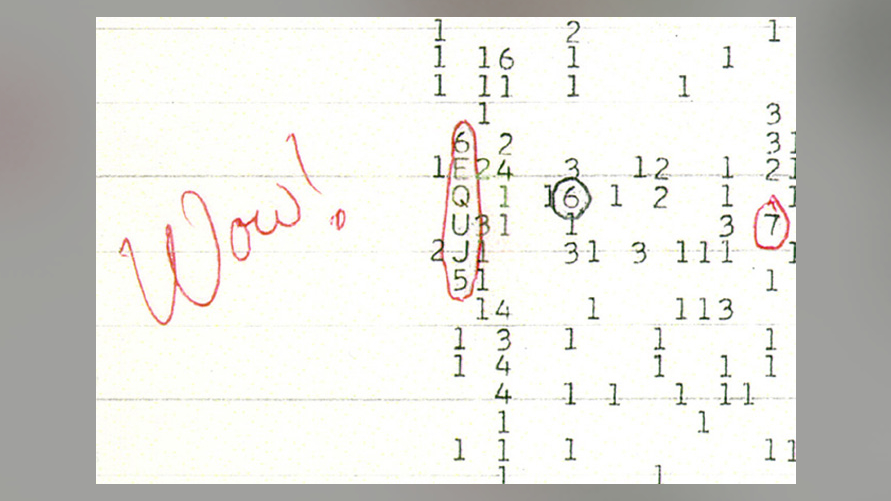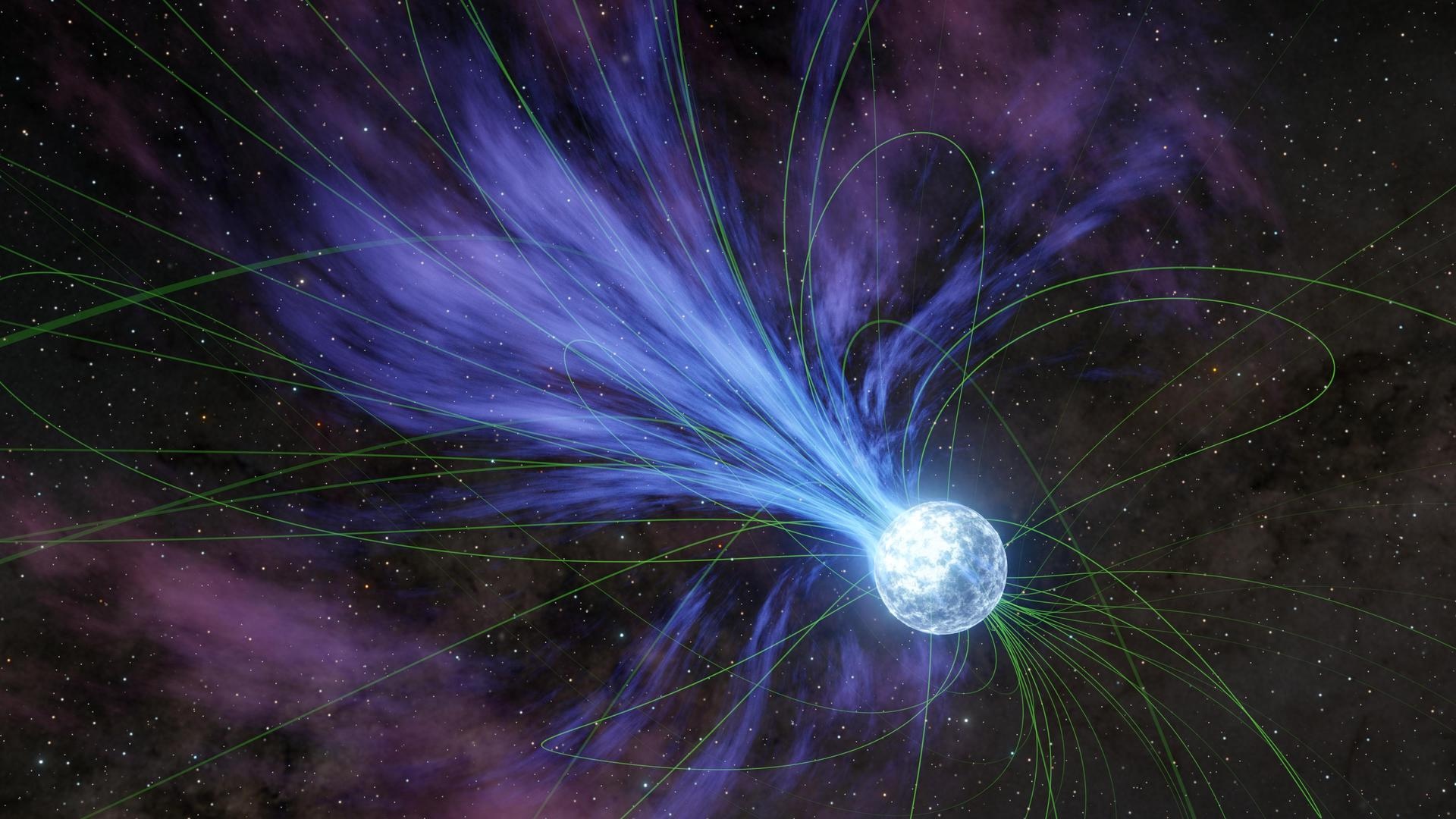
One of astronomy's grandest riddles may have just gotten even more interesting, according to new research that suggests the source of a mysterious signal that some dubbed an "alien broadcast" may instead have been the result of a remarkably rare cosmic event.
Now known as the "Wow! signal" after the incredulous expression scribbled by astronomer Jerry Ehman on a printout of telescope data, the mysterious transmission was picked up by The Ohio State University's Big Ear radio telescope in August 1977 during a routine scan for signs of extraterrestrial intelligence.
For 1 minute, 12 seconds that night, Big Ear recorded radio waves from near the constellation Sagittarius that were 30 times stronger than the background hum of deep space and were transmitted in a remarkably specific frequency of 1,420 megahertz. Hydrogen, the most abundant element in the universe, naturally emits radio waves at this frequency, leading some astronomers to think aliens would naturally opt for that frequency to try communicating with Earth.
However, nothing like the Wow! signal has ever been detected again, and no known natural phenomenon has been able to convincingly explain it — perhaps until now.
According to Abel Méndez, a planetary astrobiologist and the director of the Planetary Habitability Laboratory at the University of Puerto Rico, the bizarre Wow! signal may actually be a fortuitous detection of an extremely intense flare striking an interstellar cloud of hydrogen gas. A dense, magnetic star known as a magnetar would be the only source capable of emitting such a strong flare, which would have caused the cold hydrogen cloud to emit the radiation detected by Big Ear, Méndez and his colleagues state in a preprint paper posted to arXiv and submitted to The Astrophysical Journal.
"It is a very rare event," Méndez told Live Science. "I am still amazed that [astronomers] were able to detect it."
Méndez and his colleagues arrived at the new hypothesis after they unexpectedly discovered eight Wow!-like signals while scouting through archival data from the now-defunct Arecibo Observatory. The signals, all of which were narrowband radio emissions close to the touted 1,420 megahertz frequency, were recorded by Arecibo between February and May 2020, and each lasted two to three minutes. The fact that there were multiple intriguing signals in just an hour's worth of Arecibo's data suggests a natural origin, and the hydrogen clouds, which are common throughout the universe and naturally emit radio waves in the same frequency, are the most likely source, the researchers argue.
The newfound signals were 50 to 100 times fainter than the original Wow! signal, but that's because they haven't been illuminated by a magnetar, according to Méndez. "If they got brightened for a few more minutes, it will be the Wow! signal," he said. "But for that to happen, you have to have something out of the ordinary."
That is, something like a magnetar — a dense, highly magnetized husk of a dead star capable of emitting powerful bursts of electromagnetic radiation. A radiation beam released from a very distant, as-yet-undiscovered magnetar would theoretically be powerful enough to make intervening hydrogen clouds glow, Méndez said. The new study's findings suggest Big Ear was serendipitously pointed at one such magnetar-blasted hydrogen cloud in 1977.

An unprecedented phenomenon?
Astronomers not involved with the research generally agree that the new hypothesis is very exciting, but they remain skeptical of the details.
"I like this creativity," Michael Garrett, chair of the International Academy of Astronautics' SETI Permanent Committee, who is not affiliated with the new work, told Scientific American. "But it feels a bit contrived to me."
While such a bright, targeted emission of radio waves from hydrogen gas at the precise 1,420 megahertz frequency are possible in theory, they have never been observed. Additionally, critics say multiple coincidences needed to occur simultaneously for the new work's hypothesis to stand true, including Big Ear's gaze toward the particular hydrogen cloud that happened to be bombarded by a magnetar, and the emitted radiation's frequency had to match the never-before-detected 1,420 megahertz.
"He's suggesting a phenomenon that has never been observed," Jason Wright, a professor of astronomy at Penn State who was not involved with the new study, told Science News. "The set of physical conditions is extremely delicate and specific, and it's not clear if that's even possible."
The narrowband trait of the Wow! signal suggests humankind's radio interference is the more likely explanation, Yvette Cendes, a radio astronomer at the University of Oregon who was not involved with the new study, told Scientific American.
Forthcoming dives into Arecibo's archives by Méndez and his team could shed more light on the specifics of the new explanation. Pinpointing the signals' locations with certainty, however, would require high-resolution maps of the patches of the sky that include hydrogen clouds. That task is well suited for the Very Large Array, a network of nearly 30 radio dishes in New Mexico that work in tandem like a single, miles-long telescope.
Observation campaigns that record any changes to the properties of the hydrogen clouds, particularly their brightness, would be valuable in understanding the true origins of the mysterious Wow! signal and its newfound counterparts, Méndez said.
"Anything at all will be something to think about."







